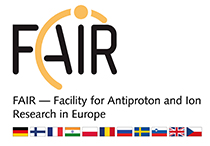Successful Commissioning of the FRS Ion Catcher
21.11.2012 |
A prototype of the cryogenic stopping cell (CSC) and the multiple-reflection time-of-flight mass spectrometer (MR-TOF-MS) for the Low-Energy Branch (LEB) of the Super-FRS at FAIR have recently been commissioned at the FRS at GSI. The successful operation of these devices ensures that low-energy, high-quality and pure ion beams will be available at the LEB for e.g. mass measurements, laser spectroscopy and decay spectroscopy of very exotic nuclides.
The FRS Ion Catcher consists of the FRS, the cryogenic stopping cell and the MR-TOF-MS. Projectile and fission fragments are produced at relativistic energies at the FRS, separated in-flight, range-focused, slowed-down and thermalized in the CSC. The MR-TOF-MS is used to perform direct mass measurements and to provide an isobarically clean beam to further experiments. The FRS Ion Catcher also serves as a test facility for the LEB of the Super-FRS at FAIR, where the CSC and the MR-TOF-MS will be key devices for experiments with stopped projectile and fission fragments.
In October 2011 and July/August 2012, a collaboration of Justus-Liebig-Universität Gießen, KVI-University of Groningen, the University of Jyväskylä and GSI has commissioned the CSC and the MR-TOF-MS on-line at the FRS Ion Catcher. For the first time, a stopping cell for exotic nuclei was operated on-line at cryogenic temperatures. Using a gas density almost two times higher than ever reached before for a stopping cell with RF ion repelling structures, various projectile fragments were thermalized and extracted with very high efficiency. Extraction times on the order of a few tens of milliseconds were achieved. For the first time, direct mass measurements of projectile fragments were performed with an MR-TOF-MS, among them the nuclide 213Rn with a half-life of just 20 ms.


